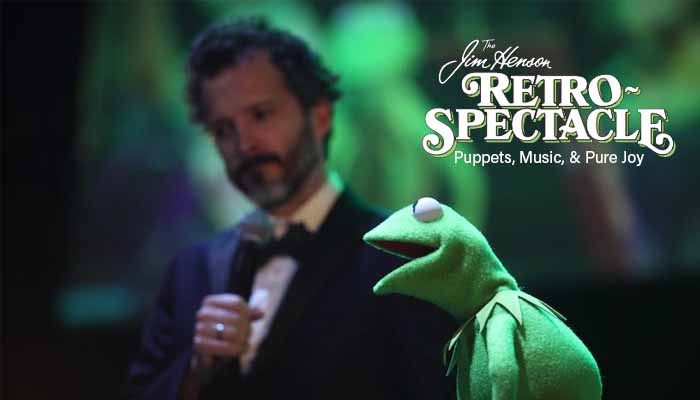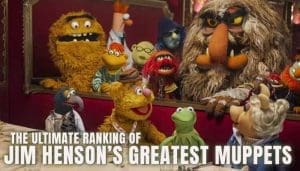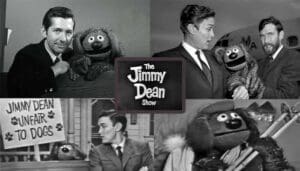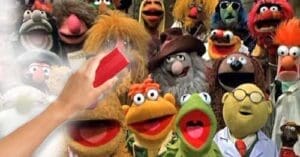The Overture of Joy: An Arrival in Outer Space
The energy inside the concert hall was not that of a typical classical music performance. Instead, it was a palpable, anticipatory hum—a collective vibration of a multi-generational audience buzzing with a shared history. The air was thick with the scent of nostalgia and the silent question of how a symphony orchestra could possibly stage a Muppet show. This was the scene for The Jim Henson Retrospectacle Live in Concert, an event that was, by all accounts, far more than a simple tribute. It was a portal to a world of felt and foam, a live manifestation of the “Muppetational” magic that has captivated millions for decades. The show’s organizer, Nic Marshall, had spent nearly a decade bringing this vision to life, inspired by his own childhood memories of The Muppet Show airing in prime time in New Zealand.
The stage itself was a spectacle, set not with theatrical flats, but with the full presence of the New Zealand Symphony Orchestra (NZSO) and a small choir, which were arranged in a semi-circle, leaving the front third of the stage open. This unique setup immediately signaled that this was an event of a different magnitude, blending high art with pop culture. A grand piano was positioned at the front, next to master of ceremonies Bret McKenzie, an artist intrinsically linked to the modern Muppet revival through his work on
The Muppets (2011) and Muppets Most Wanted (2014).
The concert began with an emotional gut punch. Bret McKenzie and Kermit the Frog appeared together, each with a banjo, to deliver a soft and sweet rendition of “Rainbow Connection”. This opening number was not merely a song; it was a profound act of shared cultural remembrance. It instantly transported every person in the room back to a personal, cherished memory, a powerful nostalgia trigger that unified the disparate audience members. The moment was made even more endearingly human by Bret’s quick-witted admission that he had broken his hand and was faking his banjo playing, crediting Kermit for “keeping it together”. This small, honest crack in the facade of a polished production set the stage for the beautiful, meta-theatrical experience that was to follow, an experience where the magic was found not in a perfect illusion, but in the honest, collaborative effort to create it.
The Comedy of Controlled Chaos: Visible Magic and Running Gags
One of the most striking and ultimately humorous aspects of the Retrospectacle was its unique production design. In a deliberate break from tradition, the show left the puppeteers completely exposed. Instead of being hidden behind a proscenium or shrouded in black, performers like Matt Vogel, Peter Linz, Carmen Osbahr, and Eric Jacobson were visible throughout the concert, rolling around on carts and manipulating their characters with rods and hands in plain view. This choice, far from breaking the magic, served as a brilliant form of meta-commentary, allowing the audience to witness the skill of the puppeteers while simultaneously remaining engrossed in the performance of the characters. The humor was derived from the exquisite tension between the fully realized character and the human effort required to bring them to life. The audience was in on the joke, and this shared understanding added a layer of authenticity and appreciation that a simple, hidden stage could not have provided.
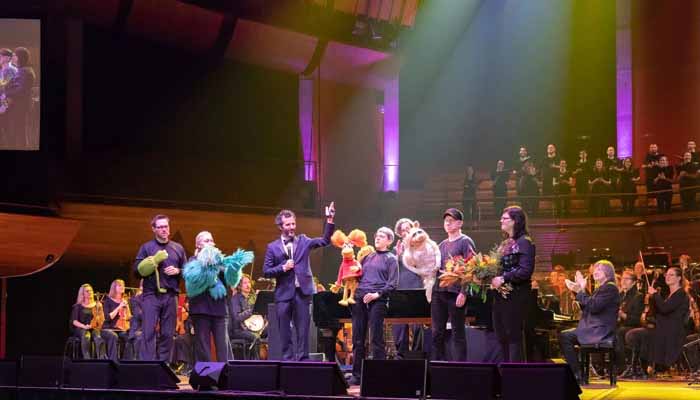
The show’s comedic core was built on a foundation of classic Muppet gags, many of which were running bits that delighted the audience. Fozzie Bear, a quintessential example of the “Muppetational” failure that becomes the punchline, took the stage to tell his “New Zealand jokes”. The orchestra played his signature fanfare, only for the audience to discover the jokes were just his standard “fly in my soup” routine with New Zealand locations tacked on, a gag that perfectly captures the character’s lovable ineptitude. Similarly, the running bit with Walter delivering Miss Piggy’s list of demands to Bret McKenzie became a central comedic thread. Piggy, ever the diva, was “jealous of Bret’s Oscar” and refused to share the stage with “that scruffy Kiwi nincompoop,” a complaint that was both perfectly in character and a playful jab at Bret’s real-life Academy Award.
Another highlight was the “classic Ernie tomfoolery” during the performance of “Rubber Duckie”. Ernie’s micromanagement of Bert, a long-standing source of humor for the duo, was on full display as he told Bert he was either “too early with the music, or too late, or with the emphasis on the wrong word”. This level of specific, endearing frustration is the essence of their dynamic. The show was also rich with other moments of playful absurdity. Red Fraggle, upon hearing the music, marveled that the Michael Fowler Centre was “big enough to fit a Gorg”. Big Bird expressed his confusion that Bret was not a “literal kiwi”. And in what was called the favorite joke of the night, when Bret asked Kermit what song they should sing to close the show, Kermit deadpanned, “How about the one we rehearsed?”. The humor in all these moments is self-aware and relies on a form of meta-commentary that simultaneously creates and deconstructs the illusion of the show.
A Neighborhood of Stars, Old and New: A Multiverse Reunion
Beyond the jokes and musical numbers, the Retrospectacle was a historically significant event. It was one of the rare live shows in recent history to feature characters from The Muppet Show, Fraggle Rock, and Sesame Street on stage together, an event that was described by one source as a “true family reunion”. To understand the magnitude of this, it is necessary to consider the complex history of these franchises. In the early 2000s, the ownership became complicated when Disney acquired the Muppets and Sesame Workshop took control of the
Sesame Street characters. This led to a period where live productions, such as the 2012 concert
Jim Henson’s Musical World at Carnegie Hall, deliberately kept the three worlds separate, a decision that a source noted was a “thrill” but still lacked the joy of true crossover. The
Retrospectacle made the bold creative choice to defy these “multiverse rules,” a decision that was met with immense excitement from the audience. The public’s enthusiastic reaction to this reunion revealed a deep-seated desire for the “family” of characters to be together again, reaffirming that the whole is indeed greater than the sum of its parts.
The success of the show was a testament to the fact that the Henson legacy is in loving and capable hands. The concert celebrated not only the classic characters but also the new generation of performers who bring them to life. Performers like Matt Vogel and Eric Jacobson, along with others such as Peter Linz and Carmen Osbahr, were seen rolling on their carts throughout the performance, a visible sign of their immense skill. Matt Vogel, in particular, was praised for his performance as The Count, as he “just commanded that stage”. The audience gave a “vigorous round of applause” for the new performers who were sitting in the back of the room during a later panel discussion. This show of appreciation demonstrated a collective understanding that the magic is not static; it is a vibrant, living tradition that is being passed down to new artists who share a genuine love for the characters.
A Maestro’s Legacy, In Three Acts: The Philosophical Heart of the Show
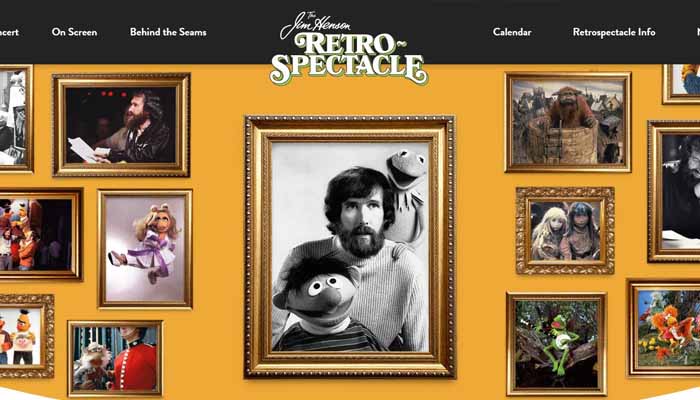
The humor and artistry of the concert were a direct reflection of Jim Henson’s creative philosophy, a worldview described by one writer as “Big Henson Energy”. This philosophical core was explored in a panel discussion titled “Celebrating Jim,” where his collaborators shared anecdotes that painted a vivid portrait of his leadership and character. Dave Goelz offered a poignant metaphor, describing Jim as a leader with a “flute” rather than a “whip,” inviting people to follow him instead of driving them from behind. He further described Henson as having a “whim of steel,” a beautiful contradiction that captures the gentle yet resolute nature of his creative drive. This collaborative and encouraging spirit was demonstrated through specific stories. Performers recounted how Jim would “act up” on set, such as when he was the uncooperative rabbit puppet in the finale of
Muppet Family Christmas or played a song about dentists on Sesame Street. He led by example, encouraging everyone to upstage him and bring their own creative chaos to the work.
The panel also provided illuminating anecdotes about the team that surrounded Henson, providing critical context for the collaborative culture. These stories highlighted a group of people who were not only brilliant at their craft but also deeply bonded by a shared, playful creativity.
| Anecdote | Speaker | Key Takeaway |
| Jim’s “whim of steel” | Dave Goelz | Jim was a gentle, inviting leader who knew what he wanted. |
| Jim acting up as a rabbit puppet | Dave Goelz | He led by example, encouraging creative, upstaging chaos from everyone. |
| Jane Henson’s monotone teleprompter read | Craig Shemin | Jane had a sharp sense of humor and was a “funny and intelligent person.” |
| Jerry Juhl’s fire extinguisher dash on Ed Sullivan | Dave Goelz | The Muppet team was a family, improvising and succeeding under pressure. |
| Don Sahlin’s desk-prank with a string | Bonnie Erickson | The workshop was a place of playful, engineering-minded creativity. |
| Frank Oz’s self-deprecating nature | Arthur Novell, Carmen Osbahr | Even the best performers had a humble, collaborative spirit. |
| Link Hogthrob’s voice origins | Craig Shemin | Jim’s personal life and humor were inextricably linked to his characters. |
This collection of stories demonstrated that the work was not just a job; it was a space for genuine friendship, vulnerability, and creative experimentation.
The concert also masterfully demonstrated how Henson’s work uses humor for a purpose beyond a simple laugh. The humor is “subversively earnest”. Fozzie Bear’s terrible jokes, for example, are funny not just because they fail, but because his earnest, vulnerable desire to make people laugh is so transparent. This vulnerability, a key trait of many Muppet characters, allows the humor to exist alongside deep empathy. This fusion of comedy and pathos is what makes Kermit’s solo performance of “Bein’ Green” so powerful; it is an existential, philosophical song delivered by a hand puppet, and the audience is able to accept both the silliness and the sincerity in a single moment. The show’s ability to be appreciated on multiple levels is a testament to this, as its humor is “genuinely funny material that you get when you get it,” allowing parents and children to share a laugh without the need for a “wink-wink nudge-nudge” dynamic. This makes the humor not just entertaining, but inclusive and unifying.
More Than a Retrospectacle, a Reunion: The Enduring Community
The concert’s finale, a rousing performance of “Life’s a Happy Song,” powerfully evoked the ending of The Muppets (2011) and served as a perfect synthesis of the evening’s themes. The image of the choir and the Muppets singing concurrently was a unifying moment that brought the entire performance to a joyful, cacophonous climax. It was a culmination that proved the concert was not a mere look back at Jim Henson’s past work but a living, breathing demonstration of his enduring legacy. The event was not just about the films or the characters; it was about the people—the performers, the collaborators, the organizers, and the fans—who continue to carry his vision forward.
The Retrospectacle was a public manifestation of a private, corporate “family reunion” , and the audience’s joyful participation showed that this sense of community is not just for the artists; it’s for everyone who loves their work. The show reaffirmed that Jim Henson’s vision—of a world filled with ridiculous optimism, creative collaboration, and unconditional acceptance—is a vibrant, ongoing conversation. In an era often defined by cynicism and division, the concert was a powerful reminder that the Muppets’ brand of earnest, vulnerable, and genuinely funny entertainment is more vital than ever. The audience left with a sense of shared joy, an appreciation for the tireless work behind the magic, and a renewed belief that life can, in fact, be a happy song, even if the concept of a “fillet of fish” is still met with little support.

